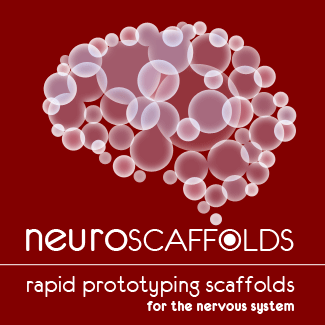 |
Rapid prototyping scaffolds for the nervous system |
 |
Advanced tissue engineering requires implants (scaffolds) with various dimensional scales to facilitate tissue regeneration. Specifically, neurons are sensitive to nanometric and micro-metric structures to guide the formation of the new nervous network. The NEUROSCAFFOLDS project aims to study and develop new implants for the regeneration of central and peripheral nerve tissue following injuries, and for this reason it is developed in 4 segments:
1) manufacturing three-dimensional scaffolds (3D);
2) study the formation of the 3D nervous network;
3) analysis of the long-term survival of the 3D nervous network;
4) develop and test 3D scaffolds for in vivo nerve tissue regeneration.
The final step of the study is therefore the in-vivo study of 3D implants produced for the regeneration of lesions in the spinal column and in the sciatic nerve, a realistic but very challenging goal.Specifically, INO-CNR is directly responsible for the production of bio-degordable 3D scaffolds using the new 3D printing Mask Projection Excimer laser StereoLithography (MPExSL) technique. These scaffolds are tested in vivo for the regeneration of the sciatic nerve and the spinal column.
Objective: to develop and validate new 3D micro-fabrication techniques for the construction of plants for the regeneration of central and peripheral nerve tissue.
Scientific coordinator INO-CNR: Fernando Brandi,
Participating Institutions:
- International School for Advanced Studies (SISSA) – Coordinator (Trieste, Italy);
- Italian Institute of Technology (Genoa, Italy);
- National Institute of Optics, CNR (Pisa, Italy);
- University of Trieste (Trieste Italy);
- Ecole Normale Supérieure (Paris, France);
- Lund Universitet (Lund, Sweden);
- Institute of Genetics and Developmental Biology, (CAS, China));
- Suzhou Institute of Nanotech and Nanobionics (CAS, China);
- Department of Neurosurgery, School of Medicine, Nanjing University (Nanjing, China).
Duration: 3 years from 2013-07-01 to 2016-06-30
EU funding: 1.8 Meuro (similar funding from CAS for Chinese partners)
Call: NMP.2013.2.2-2 Biomaterials imaging and rapid precise prototyping technology for custom made scaffolds -coordinated call with China
